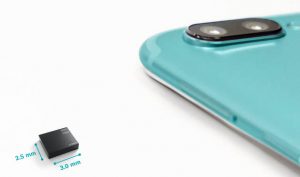[ad_1]
Called the BMI260 family, the devices combine Bosch Sensortec’s accelerometer with Bosch’s automotive gyroscope, and are claimed to be robust against temperature fluctuations and PCB stress.
“Our next-generation IMUs builds upon the BMI160,” said Bosch Sensortec CEO Dr Stefan Finkbeiner. “These deliver enhanced accelerometer performance, an extensive range of powerful features and interfaces, and ‘component retrimming’ for motionless gyroscope self-calibration.”
Component retrimming is claimed to eliminates the need for rotational stimulation when calibrating gyro sensitivity during end-user equipment test and manufacture.
- BMI260 – in production – is the base variant
- BMI261 – in production – is Android compliant and optimised for always-on smartphone gesture and activity recognition
- BMI263 – sampling – is Bosch’s first product to be compliant with the latest MIPI I3CSM standard and supports both asynchronous and synchronous timing control
Each device includes a primary and secondary interface that can be configured independently in I²C or SPI – which enables dual SPI configuration, camera modules or auxiliary sensor connections, for example a magnetometer.
The accelerometer is said to be suitable for accurate step counting, motion detection and providing data to support indoor simultaneous localisation and mapping’ (SLAM).
 Latency is low enough (~600µs max group delay, 40µs time-stamp accuracy), said Bosch, for image stabilisation, both optical and electronic, for photos and videos – the devices are Google Daydream View compliant.
Latency is low enough (~600µs max group delay, 40µs time-stamp accuracy), said Bosch, for image stabilisation, both optical and electronic, for photos and videos – the devices are Google Daydream View compliant.
Dual SPI interfaces mean that one IMU chip can server two SPI-based camera modules, supporting stereo or 3D imaging. Alternatively congruent human-machine interface (HMI) and image stabilisation – such as panorama photo panning and action video tagging.
Power consumption is low. At a full output data rate (6.4kHz) typical current draw for both accelerometer and gyroscope is 700μA. Power management allows, for example, gesture and activity recognition for only 30μA.
Package size is 2.5 x 3 x 0.8mm, and the devices are pin-to-pin compatible with the earlier BMI160 devices.
[ad_2]
Source link

